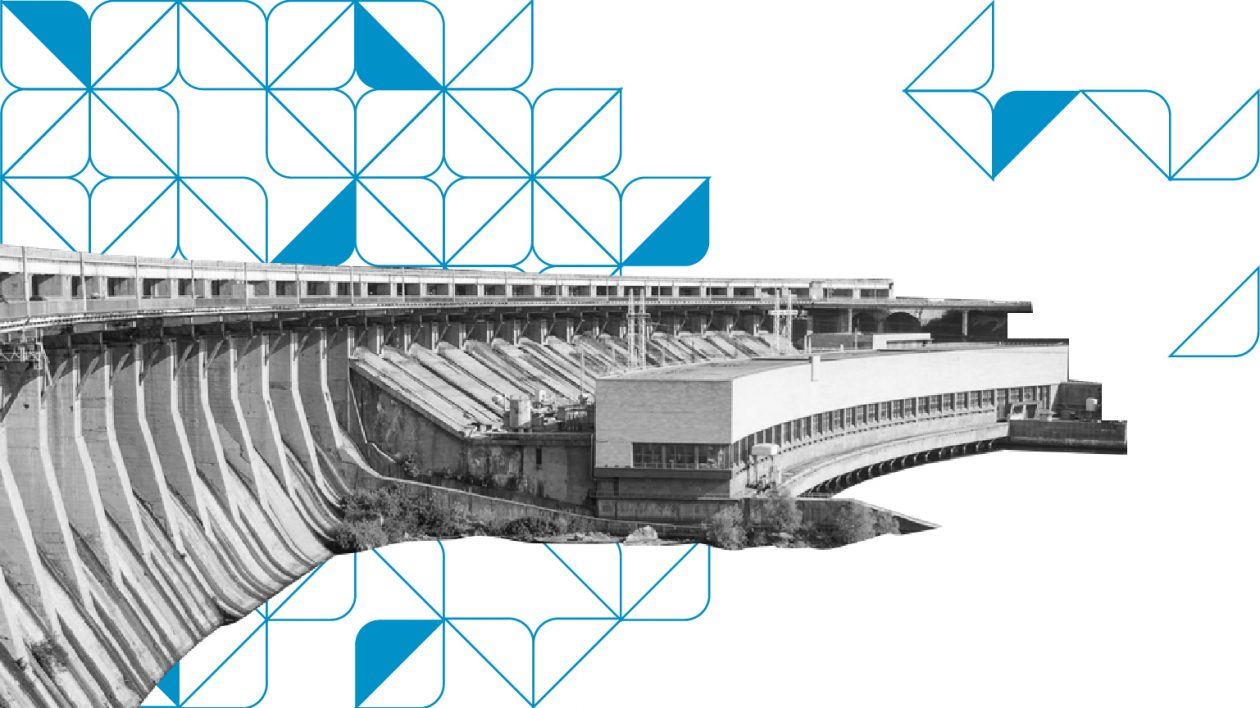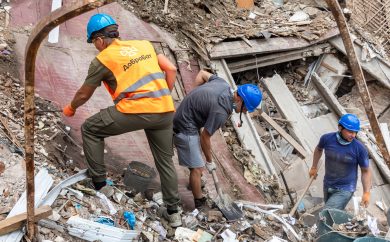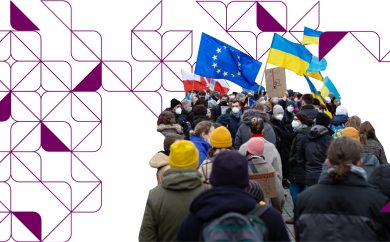In Zaporizhzhia, 2% of citizens are actively engaged with civil society organizations. Despite the considerable potential, 86% of citizens from Zaporizhzhia have never contributed to CSOs financially. Lack of interest is a major reported obstacle to active participation in civic initiatives, while almost half of respondents from Zaporizhzhia consider the President, not the people, the sole source of state power in Ukraine.
Pact presents these and other key findings of the National Civic Engagement Poll, conducted in summer 2021 under the USAID/ENGAGE Activity. Since 2019, Pact collected additional data under the three rounds of the poll from its four target oblasts – Kharkiv, Zaporizhzhia, Sumy, and Kherson.
The Latest Round of the Civic Engagement Poll
Civic Engagement: Community-Centered Activism Prevails
Zaporizhzhia residents are more actively engaged in the lives of their communities rather than activities organized by CSOs. 4% of respondents report that they regularly participate in meetings and other public events in their communities, and another 33% do so rarely. Respondents indicate the lack of interest (33%) or time (28%) as the main obstacles to active participation on a community level. When it comes to engagement in the activities of civil society organizations, 2% of respondents claim to have taken an active part, while 12% rarely joined the work of CSOs. Respondents claim they either had no interest (47%) or time (34%) to join the CSO-level events.
While the majority of Zaporizhzhia oblast citizens are well aware of various forms of democratic participation, they rarely put this knowledge into practice. Respondents’ civic participation mainly revolves around the life of their neighborhoods. During the last 12 months, 25% were engaged in the creation or work of a housing, street, or block committee, another 6% reported personally or by phone on the infrastructure issues to the local administration. 5% initiated or signed petitions to the local or national government, while 4% joined peaceful assemblies.
Similar to national polling results, the level of Zaporizhzhia respondents’ engagement in state-level forms of civic participation is below the margin of error. Less than 1% of respondents participated in the formal advisory bodies to the local or national governments or joined discussions of draft legislation. An almost equal share of respondents communicated corruption cases openly through media (1%) or reported them to the Prosecutor’s office or police (1%).
Citizen Donations: CSOs Are at the Bottom of the List
Financing civic initiatives is not a priority for Zaporizhzhia respondents. 86% – almost the same share as nationwide – have never financially contributed to the activities of civil society organizations. Respondents from the region believe that financial assistance to CSOs should be the duty of either citizens whose interests these initiatives represent (43%), the state (40%), or businesses (39%). One-third (31%) opine that civic initiatives should be funded by Ukrainian citizens.
41% of the respondents claim that nothing can convince them to financially contribute to civic initiatives. Those who are potentially willing to donate will first and foremost pay attention to the references from the people they trust (24%), clear goals and results of a civic initiative (21%), and the transparency of its financial management (18%).
Nevertheless, the poll revealed that Zaporizhzhia residents have a certain culture of donations. Most commonly, citizens claim to have provided financial support to the poor in the streets (39%) and to church (37%).
Attitude toward Reforms: Expectations of Quick Reforms Prevail
Zaporizhzhia respondents mirrored the opinion of most Ukrainians regarding the most important issues for the country – corruption (54% in the oblast vs 50% in Ukraine), crisis in the Donbas (48% vs 42%), and unemployment (39% vs 28%). Similar problems are observed on the family level – unemployment (48% in the oblast vs 34% in Ukraine), poverty (39% vs 47%), and access to healthcare (30% vs 36%). For the region, the priorities are somewhat shifting – unemployment tops the list for the majority of respondents (60%), followed by corruption (36%) and emigration (28%).
When talking about corruption, Zaporizhzhia citizens demonstrate certain discrepancies with the nation-wide perceptions. Only 27% of respondents from Zaporizhzhia oblast believe that bribery is an integral part of the citizens’ mindset (59% in Ukraine). 31% of citizens in Zaporizhzhia believe that if one can resolve an issue with a public servant by using a reward, most people will try to take advantage of this (66% in Ukraine). Zaporizhizhians are also less pessimistic about corruption in state institutions. Almost 20% of respondents believe that they will not get proper access to healthcare or higher education unless they pay a bribe (49% in Ukraine).
At the same time, respondents from the Zaporizhzhia oblast are less eager to stand up against corruption. 22% are ready to report cases of corruption that became known to them (43% in Ukraine), while 25% are ready to collectively protest against corrupt officials on the national level 40% (27% in Ukraine) would do so on the local level (44% in Ukraine).
Civic Literacy: Citizens Mistakenly Consider President the Source of Power in Ukraine
Similar to the respondents from the National Poll, Zaporizhzhia residents are generally aware of their fundamental rights, the structure of power, and budgeting procedures. Zaporizhia citizens stumbled upon the questions that typically caused troubles for the rest of Ukrainians like questions on the income tax rate (30% of correct answers in the oblast vs 41% nationwide), local executive bodies (21% vs 25%), and authorization to hold a peaceful assembly (55% vs 62%).
At the same time, Zaporizhzhia respondents seriously struggled with the questions related to the constituent power and functions of governmental bodies at the national level. Thus, 42% of respondents believe that the President is the source of state power in Ukraine. While 32% correctly named the Verkhovna Rada as the state body entitled to adopt the laws, all the rest failed to indicate the central legislature in Ukraine.
________________________________________
This survey summary was prepared by Pact as part of the USAID/ENGAGE activity, which is funded by the United States Agency for International Development (USAID). The contents of this survey summary are the sole responsibility of Pact and do not necessarily reflect the views of USAID or the United States Government.
About the CEP
The Civic Engagement Poll is conducted under the framework of the Enhance Non-Governmental Actors and Grassroots Engagement activity (USAID/ENGAGE), implemented by Pact. This report summarizes key takeaways from the poll, drawing from survey data collected in the autumn of 2021.
The survey gauges citizen awareness of and engagement in civil society activities, and citizens’ participation in and perception of reform processes in Ukraine. During the most recent survey, respondents were also asked questions on the fundamentals of state functioning, human rights, and financial literacy.
The data collection for the USAID/ENGAGE Civic Engagement Poll was conducted by the research agency Info Sapiens, in August – September of 2021. Field interviews were conducted with Ukrainian residents aged 18 years and older, face-to-face, in the respondents’ homes. The survey sampled 311 respondents and was designed in accordance with the distribution of the adult population of the Zaporizhzhia oblast by age, sex, and settlement type according to the data of the State Statistics Service of Ukraine as of January 1, 2019. The margin of error of the sample is 5.6% (excluding the design effect).
Find more results from the Civic Engagement Poll:
Winter 2021 Summer 2020 Winter 2020 Summer 2019 Winter 2019 Summer 2018 Winter 2018 Autumn 2017
You can download survey data and charts here.


